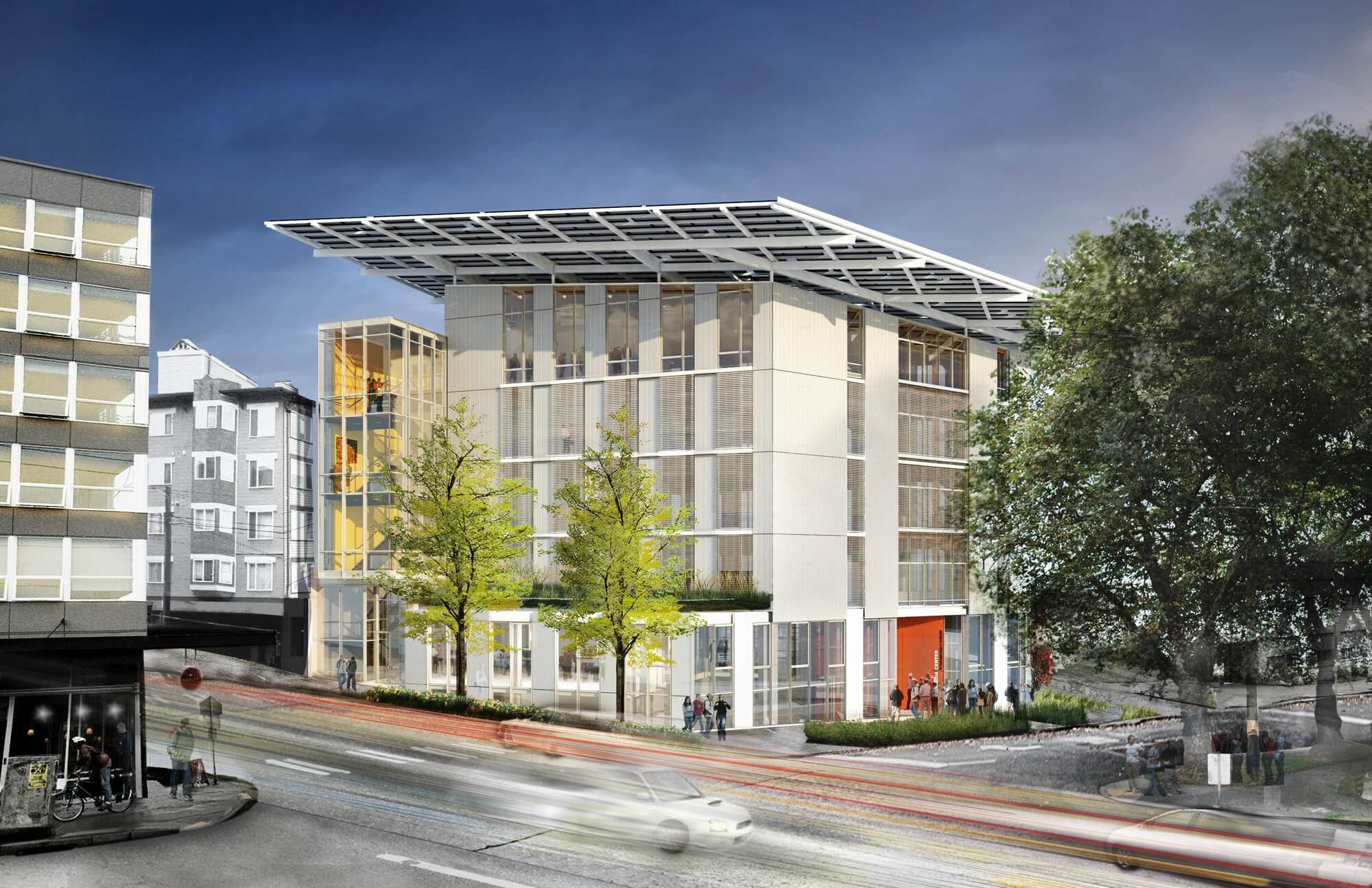Sustainable Exterior Design: Innovations and Practices for Eco-Friendly Outdoor Spaces

In today’s world, where environmental sustainability is at the forefront of design considerations, the concept of sustainable exterior design is gaining traction. Architects, landscape designers, and urban planners are increasingly prioritizing eco-friendly practices when it comes to outdoor spaces.
From incorporating renewable materials to implementing energy-efficient technologies, the focus is on creating environments that minimize environmental impact while enhancing human well-being. In the following article, we’ll share five keys that you can incorporate to achieve sustainable exterior design. Keep reading!
Sustainable exterior design: Five keys
1. Utilizing Renewable Materials
One of the key aspects of sustainable exterior design is the use of renewable materials. Instead of relying solely on traditional building materials like concrete and steel, designers are turning to alternatives such as bamboo, reclaimed wood, and recycled plastic. These materials not only reduce the carbon footprint of outdoor projects but also promote resource conservation and waste reduction.
For example, in the construction of outdoor furniture and structures, bamboo stands out as a fast-growing, renewable resource that requires minimal energy for cultivation and processing.
2. Incorporating Energy-Efficient Technologies

In addition to utilizing renewable materials, sustainable exterior design involves incorporating energy-efficient lighting and irrigation systems. LED lighting, for instance, consumes significantly less energy than traditional incandescent bulbs and can be integrated into outdoor spaces to minimize electricity consumption.
Similarly, advanced irrigation technologies, such as drip irrigation and smart watering systems, help conserve water by delivering precise amounts of water directly to plant roots, thereby reducing water waste and promoting plant health.
3. Implementing Green Infrastructure for Stormwater Management
Furthermore, green infrastructure plays a crucial role in sustainable exterior design, particularly in managing stormwater runoff. Green roofs, permeable pavements, and rain gardens are examples of innovative approaches that help mitigate the adverse effects of urbanization on water systems.
By capturing and filtering rainwater, these features reduce pollution, prevent flooding, and replenish groundwater supplies. For instance, the High Line in New York City exemplifies the integration of green infrastructure into urban outdoor spaces, with its elevated park featuring native plantings and permeable surfaces that absorb rainwater.
3. Designing Landscapes to Support Biodiversity
Another vital aspect of sustainable exterior design is designing landscapes to support local biodiversity. By selecting native plant species and creating habitat-rich environments, designers can enhance ecological resilience and promote wildlife conservation. For instance, the San Francisco Bay Area’s Exploratorium Outdoor Gallery incorporates native plantings and habitat structures to attract birds, bees, and other pollinators, contributing to urban biodiversity conservation efforts.
Case Studies of Innovative Projects
Case studies of innovative projects offer valuable insights into the practical application of sustainable exterior design principles. The Bullitt Center in Seattle, Washington, is a prime example of a building that prioritizes sustainability in its outdoor spaces. The center’s landscape design incorporates rain gardens, bioswales, and permeable pavement to manage stormwater onsite, reducing the burden on municipal sewer systems. Additionally, the use of locally sourced materials and native plantings further enhances the project’s environmental performance.

Similarly, the Singapore Botanic Gardens showcases how sustainable design principles can be applied to large-scale outdoor environments. The gardens feature a network of rainwater harvesting systems, solar-powered lighting, and extensive greenery that not only beautifies the space but also contributes to climate resilience and biodiversity conservation in the urban context.
Conclusion
In conclusion, sustainable exterior design offers a holistic approach to creating eco-friendly outdoor spaces that prioritize environmental stewardship and human well-being. By integrating renewable materials, energy-efficient technologies, green infrastructure, and biodiversity-supportive landscapes, designers can mitigate the environmental impact of outdoor projects while creating resilient and vibrant spaces for people to enjoy.
As exemplified by innovative case studies, the future of outdoor design lies in embracing sustainable practices that harmonize with nature and contribute to a more sustainable future.
In today’s world, where environmental sustainability is at the forefront of design considerations, the concept of sustainable exterior design is gaining traction. Architects, landscape designers, and urban planners are increasingly prioritizing eco-friendly practices when it comes to outdoor spaces.
From incorporating renewable materials to implementing energy-efficient technologies, the focus is on creating environments that minimize environmental impact while enhancing human well-being. In the following article, we’ll share five keys that you can incorporate to achieve sustainable exterior design. Keep reading!
Sustainable exterior design: Five keys
1. Utilizing Renewable Materials
One of the key aspects of sustainable exterior design is the use of renewable materials. Instead of relying solely on traditional building materials like concrete and steel, designers are turning to alternatives such as bamboo, reclaimed wood, and recycled plastic. These materials not only reduce the carbon footprint of outdoor projects but also promote resource conservation and waste reduction.
For example, in the construction of outdoor furniture and structures, bamboo stands out as a fast-growing, renewable resource that requires minimal energy for cultivation and processing.
2. Incorporating Energy-Efficient Technologies

In addition to utilizing renewable materials, sustainable exterior design involves incorporating energy-efficient lighting and irrigation systems. LED lighting, for instance, consumes significantly less energy than traditional incandescent bulbs and can be integrated into outdoor spaces to minimize electricity consumption.
Similarly, advanced irrigation technologies, such as drip irrigation and smart watering systems, help conserve water by delivering precise amounts of water directly to plant roots, thereby reducing water waste and promoting plant health.
3. Implementing Green Infrastructure for Stormwater Management
Furthermore, green infrastructure plays a crucial role in sustainable exterior design, particularly in managing stormwater runoff. Green roofs, permeable pavements, and rain gardens are examples of innovative approaches that help mitigate the adverse effects of urbanization on water systems.
By capturing and filtering rainwater, these features reduce pollution, prevent flooding, and replenish groundwater supplies. For instance, the High Line in New York City exemplifies the integration of green infrastructure into urban outdoor spaces, with its elevated park featuring native plantings and permeable surfaces that absorb rainwater.
3. Designing Landscapes to Support Biodiversity
Another vital aspect of sustainable exterior design is designing landscapes to support local biodiversity. By selecting native plant species and creating habitat-rich environments, designers can enhance ecological resilience and promote wildlife conservation. For instance, the San Francisco Bay Area’s Exploratorium Outdoor Gallery incorporates native plantings and habitat structures to attract birds, bees, and other pollinators, contributing to urban biodiversity conservation efforts.
Case Studies of Innovative Projects
Case studies of innovative projects offer valuable insights into the practical application of sustainable exterior design principles. The Bullitt Center in Seattle, Washington, is a prime example of a building that prioritizes sustainability in its outdoor spaces. The center’s landscape design incorporates rain gardens, bioswales, and permeable pavement to manage stormwater onsite, reducing the burden on municipal sewer systems. Additionally, the use of locally sourced materials and native plantings further enhances the project’s environmental performance.

Similarly, the Singapore Botanic Gardens showcases how sustainable design principles can be applied to large-scale outdoor environments. The gardens feature a network of rainwater harvesting systems, solar-powered lighting, and extensive greenery that not only beautifies the space but also contributes to climate resilience and biodiversity conservation in the urban context.
Conclusion
In conclusion, sustainable exterior design offers a holistic approach to creating eco-friendly outdoor spaces that prioritize environmental stewardship and human well-being. By integrating renewable materials, energy-efficient technologies, green infrastructure, and biodiversity-supportive landscapes, designers can mitigate the environmental impact of outdoor projects while creating resilient and vibrant spaces for people to enjoy.
As exemplified by innovative case studies, the future of outdoor design lies in embracing sustainable practices that harmonize with nature and contribute to a more sustainable future.







